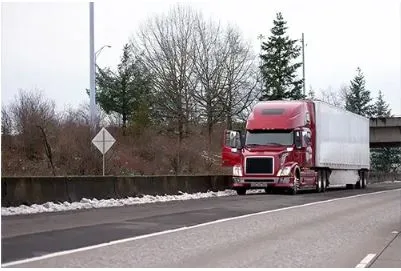Breakdowns Happen: How to Handle Emergency Dry Van Trailer Repairs on the Road
A breakdown on the road is every truck driver’s nightmare—especially when hauling freight on a tight schedule. While dry van trailers are among the most common and versatile transport options in the trucking industry, they are not immune to mechanical failures or emergency damage. Whether it’s a tire blowout, brake malfunction, or a damaged door latch, knowing how to manage emergency dry van trailer repair situations is essential for safety, efficiency, and minimizing downtime.
This guide will walk you through the practical steps every driver and fleet manager should take to handle on-the-road trailer emergencies effectively.
Understanding the Risks: Why Dry Van Trailers Break Down
Dry van trailers are enclosed, box-shaped units designed to protect cargo from external elements. Their durability makes them a go-to solution for transporting general freight. However, these trailers are exposed to long hours of travel, varying load weights, and diverse road conditions—all of which contribute to wear and tear.
Common Causes of Dry Van Trailer Breakdowns:
- Tire Failures – One of the most frequent issues, often caused by under-inflation, overloading, or road hazards.
- Brake Problems – Worn-out brake shoes or air system leaks can lead to reduced stopping power.
- Electrical Failures – Issues with trailer lights, wiring, or connectors can create safety risks and DOT violations.
- Structural Damage – Doors, walls, and floors may be compromised due to load shifts or collisions.
- Suspension or Axle Issues – Caused by overuse or rough terrain.
Understanding these vulnerabilities is the first step toward being prepared for emergency repairs.
Preparing for the Inevitable: What to Carry
While you can’t predict exactly when a trailer breakdown will happen, you can certainly prepare for it. Having the right tools and resources on hand makes a significant difference when you’re stuck on the side of the road.
Essential Equipment for Emergency Repairs:
- Portable air compressor (for tire inflation)
- Wheel chocks and safety cones
- Reflective triangles or flares
- Basic toolkit (wrenches, screwdrivers, pliers)
- Electrical repair kit (fuses, connectors, tape)
- Spare bulbs and wires
- Fire extinguisher
- High-visibility safety vest
- Emergency contact list (mechanics, dispatchers, towing services)
Also, ensure your fleet’s telematics system is up to date, enabling real-time diagnostics and GPS tracking in case help needs to be dispatched.
Immediate Actions When a Breakdown Occurs
When something goes wrong on the road, the first few minutes are critical. Stay calm and follow a systematic approach.
Step-by-Step Emergency Procedure:
- Pull Over Safely – Move your truck and trailer as far from traffic as possible.
- Alert Others – Turn on your hazard lights immediately.
- Secure the Area – Use flares or reflective triangles to warn other drivers and avoid secondary accidents.
- Assess the Situation – Try to identify the issue if it’s safe to do so.
- Call for Help – If the issue is beyond your capability, contact your dispatcher or a professional dry van trailer repair service.
- Document the Breakdown – Take photos, note the location and time, and keep a record for compliance and insurance.
Choosing the Right Mobile Trailer Repair Service
Not all roadside services are equipped to handle dry van trailer issues. Look for providers that specialize in commercial vehicle and trailer repairs, and ideally, have mobile units that can reach you wherever you’re stranded.
What to Look For:
- 24/7 availability
- Experience with dry van trailers
- DOT certification
- Real-time ETA tracking
- Transparent pricing
- Ability to perform both minor and major repairs onsite
Establishing a relationship with a nationwide repair network or having a contract with a reliable mobile repair company can save hours of frustration in an emergency.
When to Tow and When to Repair Onsite
Not every breakdown needs a tow. In many cases, mobile technicians can get you back on the road quickly with onsite repairs. However, certain scenarios do require a tow to a shop:
Onsite Repair Situations:
- Flat or blown tire replacement
- Brake pad adjustments
- Light wiring fixes
- Door or latch malfunctions
- Minor suspension fixes
Towing Required When:
- Extensive structural damage
- Complete axle failure
- Major brake system failure
- Severe electrical system faults
- Fire or chemical damage to trailer
Knowing the difference helps avoid unnecessary tow fees and ensures your cargo gets to its destination with minimal delay.
Communication is Key
During any emergency, constant communication with your dispatcher and customer is vital. Provide updates about your location, nature of the problem, and expected repair time. Use electronic logging devices (ELDs) or fleet management platforms to transmit this information in real time.
Being transparent builds trust and allows dispatch to reroute other vehicles, inform the receiver, or make alternate plans if necessary.
Preventative Maintenance: Your Best Defense
Most emergency dry van trailer repair issues are preventable with regular maintenance and inspection protocols. Drivers should complete pre-trip and post-trip inspections without fail, documenting any issues and addressing them before the next haul.
Key Areas to Monitor:
- Tires – Check pressure, tread, and signs of wear.
- Brakes – Listen for air leaks and inspect drums and linings.
- Lights – Test brake lights, turn signals, and reflectors.
- Suspension – Look for damaged or worn components.
- Doors and Seals – Ensure they close securely and aren’t leaking.
Investing in preventive maintenance reduces the likelihood of a breakdown, saving money and enhancing safety over time.
Insurance and Documentation
In the event of a major breakdown or accident, make sure all incident details are recorded accurately for insurance or claims purposes. Many commercial carriers require detailed incident reports, including:
- Time and date
- Location (GPS coordinates if possible)
- Nature of the issue
- Photos of the damage
- Repair invoices or service logs
Keep these documents organized and accessible in your vehicle or fleet system.
Training Drivers to Handle Emergency Repairs
Even the best roadside assistance service can’t get to you instantly. That’s why training drivers to perform minor repairs and manage safety protocols is invaluable.
Core Skills Drivers Should Know:
- Replacing trailer lights and fuses
- Patching or inflating a tire temporarily
- Using reflective safety gear
- Conducting visual inspections
- Communicating effectively with dispatch and roadside technicians
Investing in driver education programs can improve your fleet’s response time and reduce the impact of on-the-road emergencies.
Final Thoughts: Stay Calm, Stay Safe
Breakdowns are an unfortunate but inevitable part of the trucking world. The key to handling emergency dry van trailer repair situations lies in preparation, knowledge, and quick thinking. Whether you’re behind the wheel or managing a fleet, following a structured response plan not only minimizes downtime—it also protects lives, freight, and reputations.
When you’re prepared for the worst, you can keep moving toward the best.




